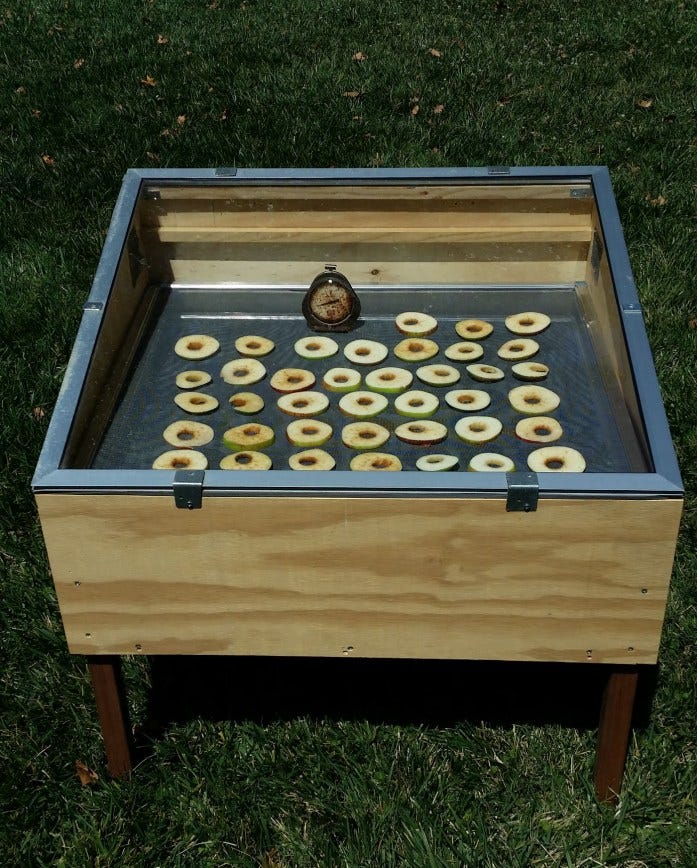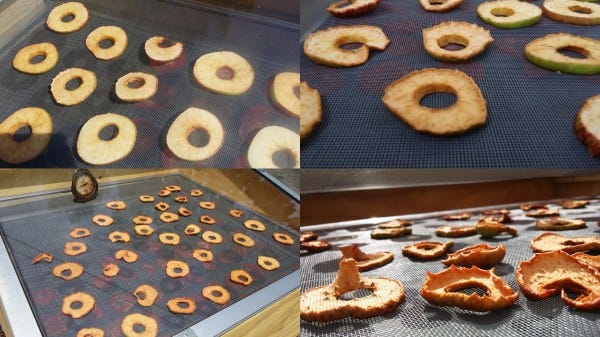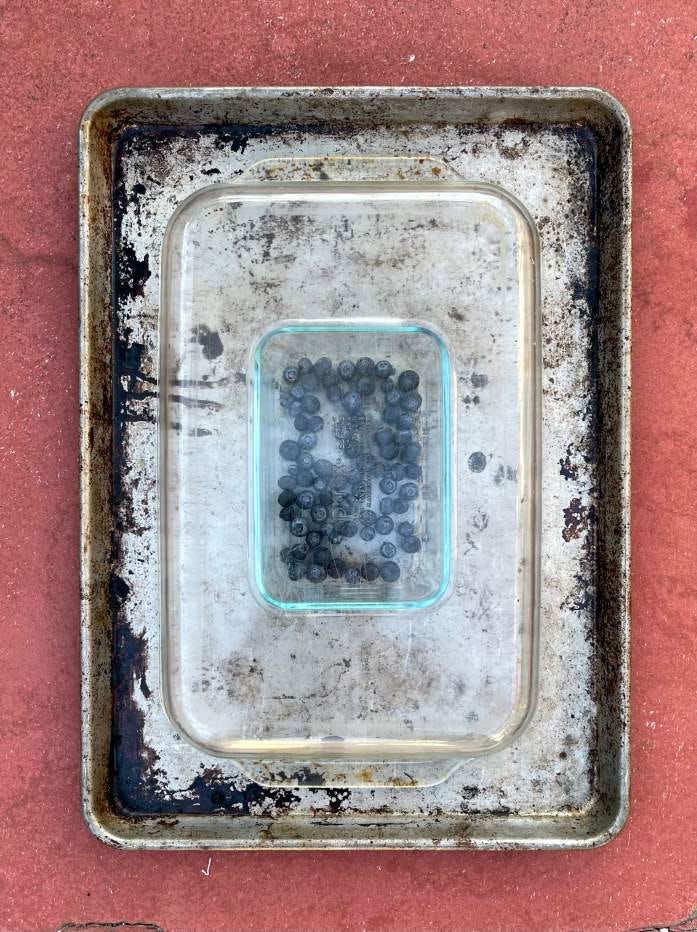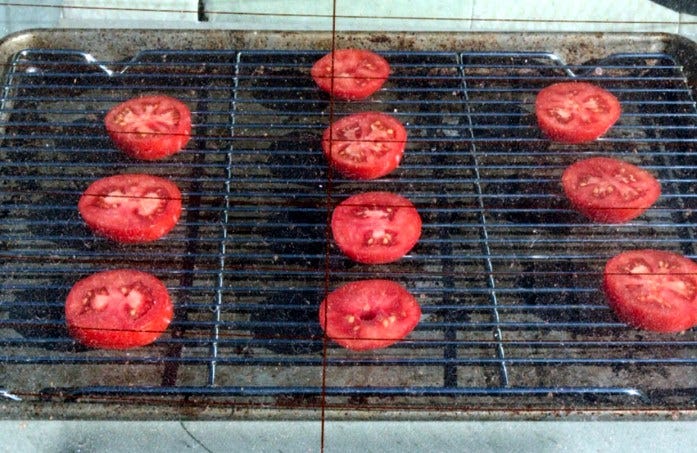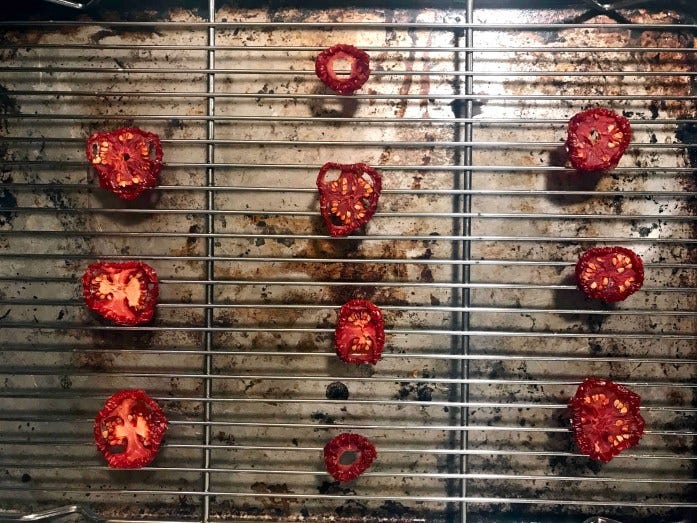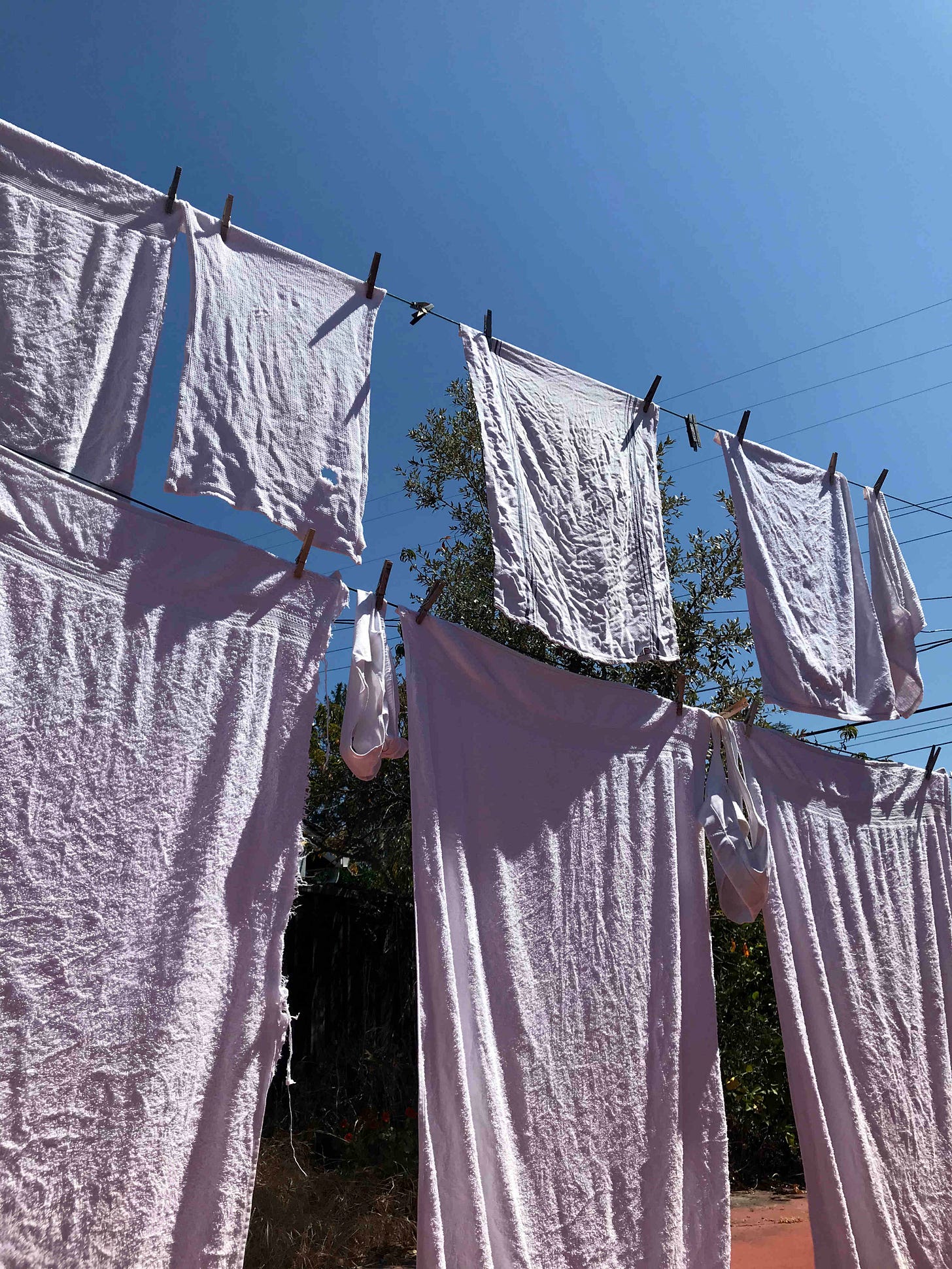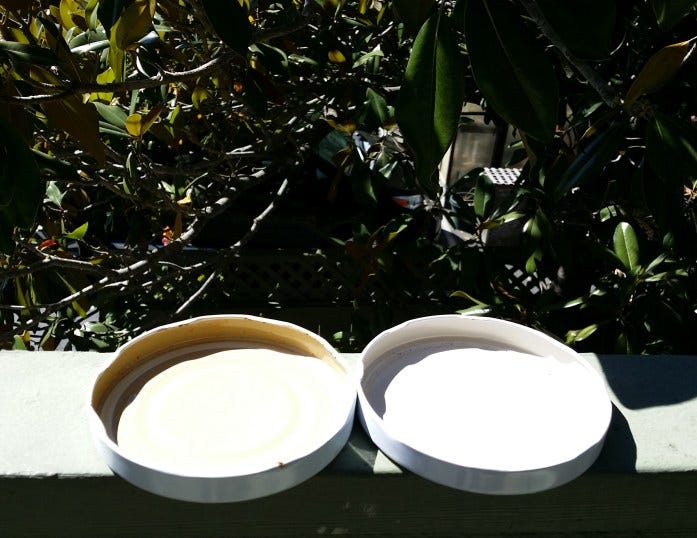Harness the Sun for Zero-Waste Cooking and More
Let the sun take over some of your household chores
Last week in California, we experienced our first heat wave of the summer. On Thursday, the temperature hit 99°F where I live, near San Francisco. In the Sacramento Valley, where my daughter MK lives, the thermometer reached 109°F. With air conditioners cranked up full-blast while hydroelectric plants lack the necessary water to operate due to drought, extreme heat this summer will stress our power grid, which may lead to power outages.
Fortunately, the sun never has a power outage. Harness its free rays to complete some of your household chores.
Fun with a solar food dehydrator
The manager at the intentional community I lived in for 15 years built the efficient solar food dehydrator pictured above. The raised wooden box, topped with a glass window pane, holds two horizontal screens inside, which easily slide in and out the back. Beneath the screens sits a matte black piece of thin metal. A four-inch wide opening along one side of the bottom, protected with more window screening, plus two small vents on the sides keep the internal temperature at an ideal range for dehydrating—and not cooking—food.
On very hot days, the temperature of this solar food dehydrator can reach 225ºF. When I dehydrated the apples pictured here on a hot but not sweltering day, the oven thermometer inside read 175ºF.
If you’d like to build a solar dehydrator of your own, you’ll find many excellent plans online, ranging from an upcycled pizza box to lovely wooden models similar to the one above. Go here for a post on solar cookers.
Go here for the recipe to dehydrate apple slices. Add these to granola and trail mix or rehydrate and use in baking.
Go here for information on solar dehydrated tomatoes. These sundried tomatoes taste like candy.
Go here for the a recipe for solar baked kale chips. Wash them down with some kombucha for the full hippie effect.
When you don’t have a solar food dehydrator
Even if you do live in a commune, you may not have access to a solar food dehydrator.
Makeshift solar dehydrator
This past weekend, since I literally could have fried an egg on the pavement, I decided I would dehydrate blueberries on the concrete.
I placed a handful of blueberries in a glass dish, placed that on a cookie sheet and covered the smaller dish with an overturned glass baking dish. The baking dish wasn’t quite flush with the cookie sheet, which let in some air. I left this outside on the concrete all day.
After I dehydrated these blueberries, I remembered that I had seen an old screen in the garage. I’ll clean that off and dehydrate some fruit on it next. Two screens would be ideal—one to spread the fruit across, another to protect the fruit. Without a glass top to raise the temperature, the fruit will require more time outside, maybe a few days.
Car as solar dehydrator
Last October, during our fires and a heat wave, I dehydrated tomato slices inside the car. (And yes, I realize driving contributes to the climate crisis. I rarely drive anywhere and ride my bike instead, which I can do because I live downtown. Many people cannot forgo their cars so easily.)
I set a cooling rack in a cookie sheet, arranged 1/4-inch-thick slices on it and left the tomatoes in the car for a couple of days.
Now, is a hot car the best environment for dehydrating food? This nine-year-old car has off gassed many of its VOCs (volatile organic compounds) unlike a newer car. Even so, I’m not sure if I will try this again. I would love to hear people’s thoughts.
More tasks for the sun: Solar drying clothes and de-smellifying lids
On the hottest summer days, when you hang wet clothes to dry on the line (or on racks), by the time you reach the end of the clothesline, the clothes at the start will be dry.
According to the US Energy Information Association (EIA), clothes dryers account for 5 percent of total household energy consumed in the US, while washing machines account for only 0.5 percent of household energy, not including the energy to heat the water in warm or hot loads.
As you head outside to dehydrate food and hang laundry, take care of smelly jar lids as well. The simplest way to remove pickle, salsa and other strong smells from jar lids is…
…to put them underside up in the sun for several hours. I was amazed the first time I tried this. It works so well and requires zero energy—neither fossil fuels from the ground nor effort on your part.
Happy first week of summer!
Cook-along with Plastic Free July Founder, Rebecca Prince-Ruiz
On Friday, July 2nd, 7pm PT/10pm ET, to celebrate Plastic Free July, I’ll join Rebecca Prince-Ruiz on Zoom to cook zero-waste fried rice with random ingredients. Reducing food waste also reduces packaging waste, much of which is plastic. After registering, you’ll receive a list of ingredients for the event. Please go here to register.
If you ordered my cookbook, thank you very much! I hope you are enjoying it. If you ordered it from Amazon, will you please write a review (and since you already have your browser… copy and paste it to Goodreads too)? Thank you for your support!




